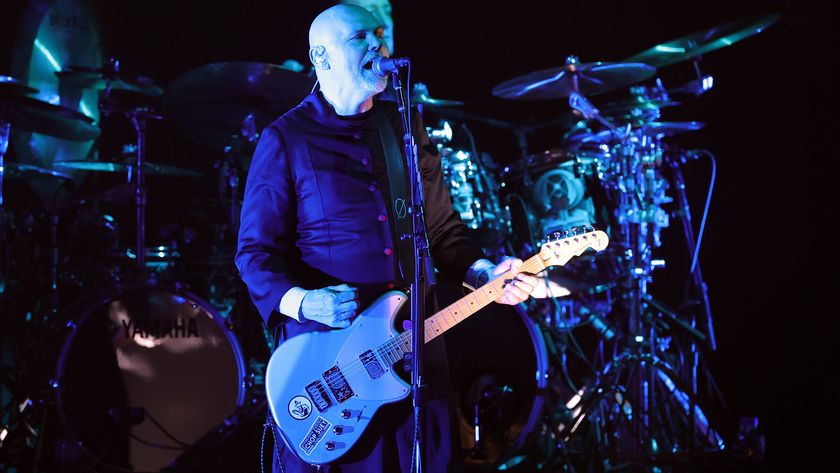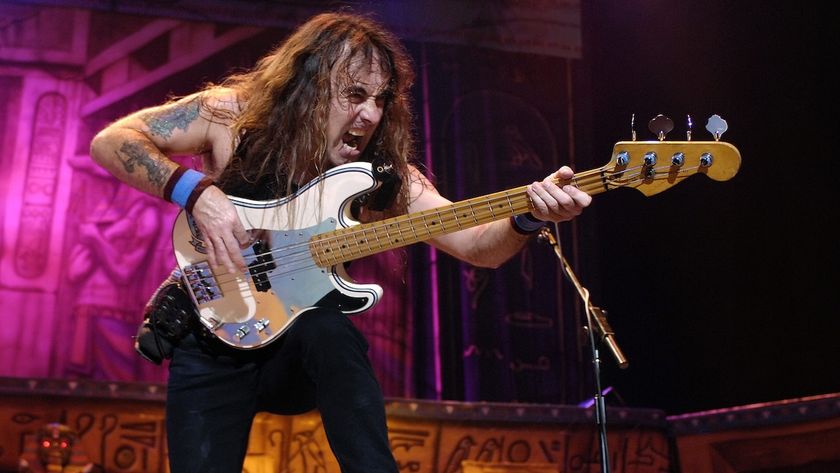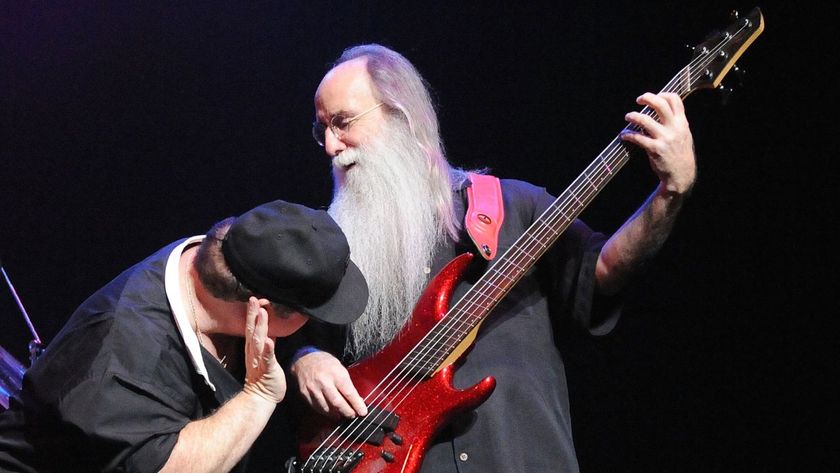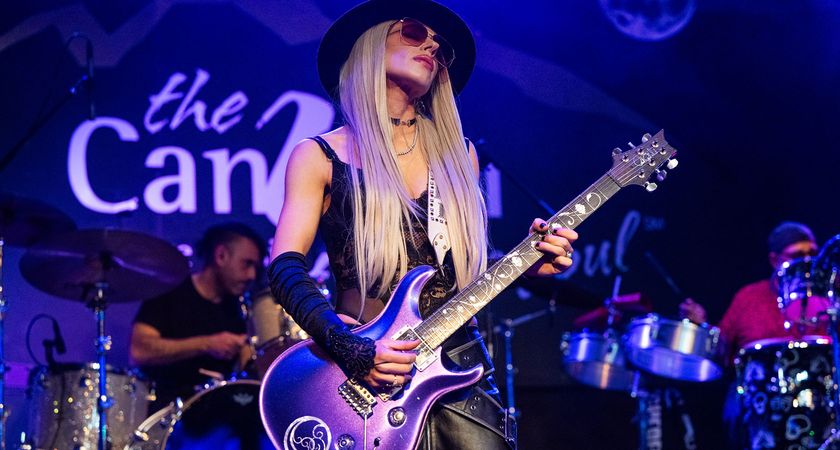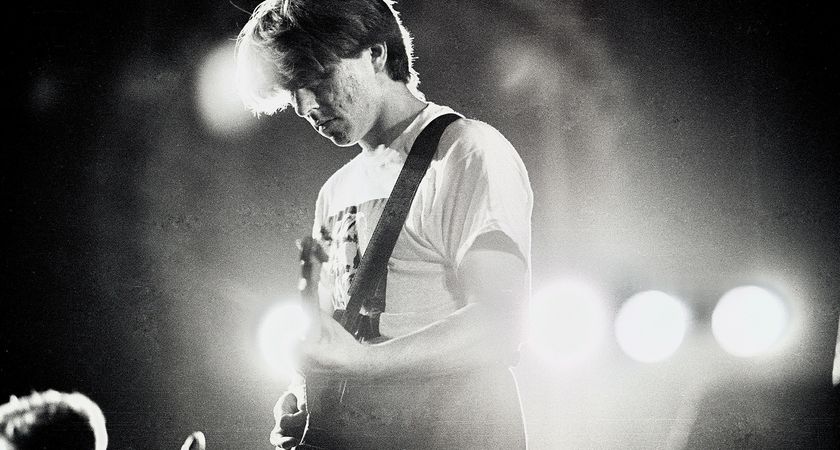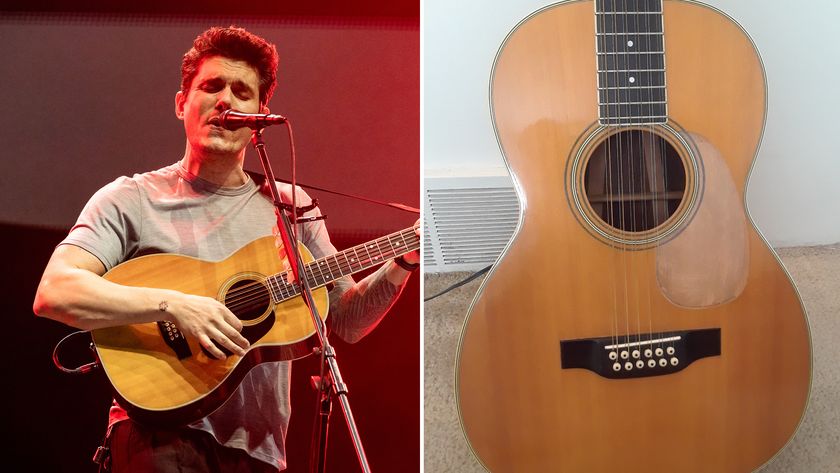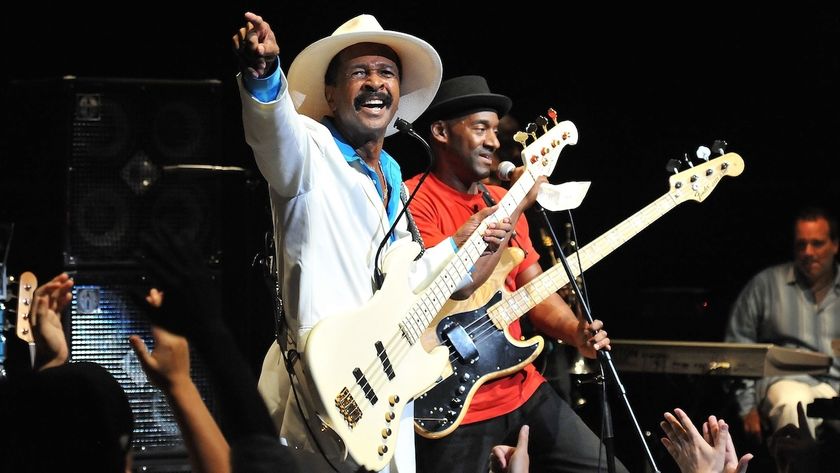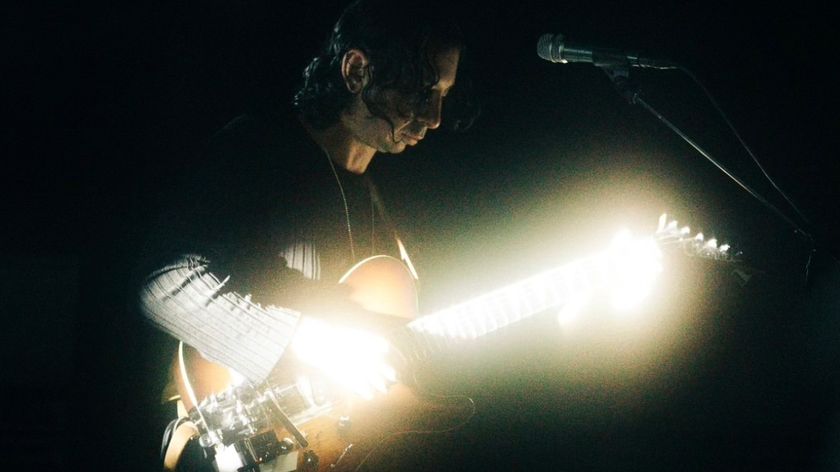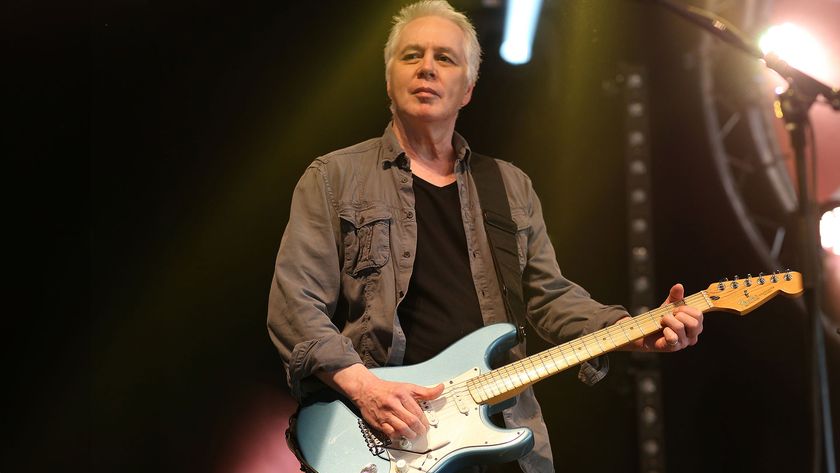Tonal Recall: The Secrets Behind the Extraordinary Guitar Sounds—“Shine on You Crazy Diamond (Parts I–V),” “Red Barchetta”
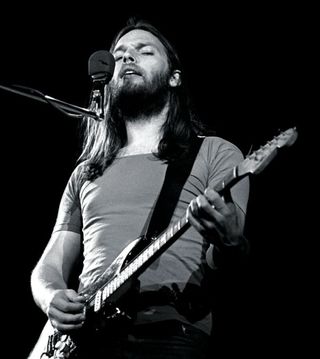
Finding out what gear guitarists use isn’t a problem. Most players will gladly recite a list of their favorite guitars and equipment when asked, especially if they have signature model products. If they won’t, there’s usually a good chance that somebody somewhere has at least snapped a photo or two of their guitars and live rigs.
The bigger challenge is finding out how most guitarists use their gear. It’s not the fault of guitar journalists or the artists themselves—cataloging every single guitar played and amp or effect setting used can be a tedious, laborious, time-intensive affair, and many guitarists can’t remember all of the details (that’s why they pay their guitar techs big bucks). I personally can’t remember every knob on certain amps I own, let alone what my exact favorite settings are.
To help you figure out how to create the guitar tones of several iconic songs, we’ve dug deep into research mode, combing old interviews and meticulously examining stage and studio photos from the appropriate eras. I then dug into my personal gear collection of over 100 guitars, 75 amps and 400 pedals and rack processors to replicate those sounds. If I didn’t have particular pieces of gear, I used items like Fractal Audio’s Axe-Fx II XL+ and AX8 (extremely helpful), a Line 6 POD HD500X and various iPad apps, including Positive Grid’s Bias Series and IK Multimedia’s AmpliTube Series.
Much of the original gear used to record these songs is well known, and as a result many of these items are very expensive, if you can even find them. For those of you with limited funds, we’ve also put together more affordable alternative rigs that should provide most of the core elements of these tones. If you want it all, the most affordable alternative may actually be Fractal’s AX8 and a great guitar or two of your personal preference.
Because control markings and layout styles are inconsistent, I’ve listed all settings from 0–10 where 0 is completely off, 10 is all the way up and 5 is exactly in the middle. Keep in mind that the sound of even the same guitars and amp models can often vary dramatically, especially with vintage gear more than 30 years old. If the recommended settings don’t sound quite right, tweak them as you see fit. These settings worked best with my rigs and should get you very close, but variables such as a guitar’s tone woods and pickups can make a difference. Pedals are listed in the order that they should be chained together in series from the guitar to the amp.
Also keep in mind that all of the examples are studio recordings, so the sounds may not be ideal for live performance. Other important elements like the mics, outboard gear and mixing console settings used in the studio while tracking, mixing and mastering can affect the overall tone, so these sounds may not completely match the final product you hear on a record. However, we hope you’ll find that our settings get you most of the way there and inspire you to come up with your own signature sounds to influence new generations.
“SHINE ON YOU CRAZY DIAMOND (PARTS I–V)”
Pink Floyd, Wish You Were Here (1975)
Guitarist: David Gilmour
Get The Pick Newsletter
All the latest guitar news, interviews, lessons, reviews, deals and more, direct to your inbox!
Over the years, David Gilmour has crafted some of the sweetest Strat tones known to mankind. On “Shine On You Crazy Diamond (Parts I–V),” the epic 13-minute opening track to Wish You Were Here, he lays down more awesome tones than most guitarists achieve in a lifetime, though the changes of textures are so smooth and the buildup is so subtle that most listeners don’t notice how many different sounds he actually employs.
Gilmour makes his entrance just past the two-minute mark with a bluesy, clean tone played on the Strat’s neck pickup with its tone control backed off slightly. That shifts to a psychedelic swirl about two minutes later, where Gilmour plays a droning four-note figure through an MXR Phase 90, likely with a Leslie rotating speaker adding additional texture and depth. This leads to another clean neck pickup solo, but this time the tone control is all the way up, then he shifts around 6:06 to the bridge pickup and kicks on a Colorsound Power Boost overdrive at the peak of the crescendo.
His next solo is even more aggressively distorted, played on the bridge pickup with the Power Boost and Phase 90 providing hollow midrange and modulated motion. His brief melodic passage at 9:46 is doubled and distorted, then he ends the song by playing crisp, shimmering arpeggio figures on the bridge pickup with the Phase 90 adding texture and movement.
ORIGINAL GEAR
GUITAR: 1969 Fender Stratocaster (black finish) with 1963 rosewood neck and 1971 Fender Stratocaster pickups
AMPS: circa 1973-74 Hiwatt DR103 modified with linked channel input (Linked input, Normal Volume: 6, Brilliant Volume: 4, Bass: 7, Treble: 7, Middle: 4, Presence: 6, Master Volume: 5–7), Leslie 147 (slow rotation rate)
CABINET: WEM Super Starfinder 200 4x12 with Fane Crescendo 12-inch speakers
PEDALS/EFFECTS: Colorsound Power Boost (Treble: 2, Bass: 5, Volume: 5–8), MXR Phase 90 (Speed: 6 for drone notes, 4 for solos and outro)
STRINGS/TUNING: .009– .042 Gibson Sonomatic/Standard
PICK: Fender Medium
- Fender Standard Stratocaster with rosewood fretboard
- Fender Super Champ X2
- Vintage FX Colordrive
- MXR Phase 90
The Super Champ X2’s effects section features a Vibratone slow setting that can be used to replicate the Leslie rotating speaker effect. Use Channel 1 and crank up the volume control just to the edge of breakup for a fat, dynamically expressive clean tone.
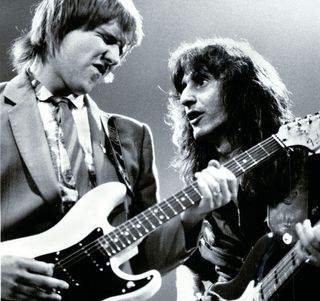
“RED BARCHETTA”
Rush, Moving Pictures (1981)
Guitarist: Alex Lifeson
Alex Lifeson’s sound constantly evolved during the Seventies and Eighties, but his tone on Rush’s Moving Pictures combines the best of his late Seventies progressive hard rock tones with his emerging brighter, cleaner new wave–inspired sound. The core of his sound on this album was a blend of clean and overdrive textures, but not from the sources one might expect. Lifeson’s clean sound came courtesy of a Marshall combo—a 4140 Club and Country model—which was Marshall’s version of a Fender Twin. His distortion came mostly from his late-Seventies Hiwatts—the two-input versions with higher gain than the early Seventies four-input models.
Lifeson bought his first Hiwatts sometime in late 1977 or early 1978, and since Rush was based in Canada it’s likely that Lifeson bought his Hiwatts in Canada as well. Starting in 1977, Hiwatt’s Canadian distributor modified the amps so the Normal and Bright channels were linked when plugging into the Bright input. As a result, the 100-watt model (called the DR105 instead of the standard DR103) was capable of delivering a much more aggressive distorted tone. Close inspection of late-Seventies photos of Lifeson’s Hiwatts reveals that the heads were modified with a third input in the lower left corner covering the “Bright” lettering, perhaps to restore the Bright-only input.
In previous interviews, Lifeson said that a modified white Strat was his main guitar on “Red Barchetta,” but the guitar tone on the solo has the distinctive fat midrange and acoustic-like honk of his Gibson ES-355. The Boss CE-1 Chorus Ensemble—an essential element of Lifeson’s tone starting with Hemispheres—is engaged throughout the song.
ORIGINAL GEAR
GUITARS: Modified Fender Stratocaster (white) with rosewood neck (large Fender headstock), vintage-style tremolo, master volume/tone controls, Gibson-style three-way pickup selector and Gibson humbucker in bridge position (bridge pickup), Gibson ES-355 (bridge pickup, solo only)
AMPS: Two Marshall 4140 Club and Country 2x12 combos with redframe McKenzie speakers (Channel 2 High input, Master Volume: 7-8, Bass: 3, Middle: 6.5, Treble: 6, Volume: 5), Two Hiwatt DR105 heads with Hiwatt 4x12 speaker cabs loaded with Fane or Celestion speakers (Linked “Bright” input, Normal Vol: 6, Bright Vol: 5, Bass: 6, Treble: 5, Middle: 5, Presence: 5, Master Vol: 10)
*Four amps total were individually miked in stereo: one Marshall/Hiwatt rig for the left and an identical Marshall/Hiwatt rig for the right.
PEDALS/EFFECTS: MXR Distortion + (Volume: 9-10, Distortion: 4, solo only), Boss CE-1 Chorus Ensemble (Input: Low, Level: 8, Chorus Intensity: 5, Chorus/Vibrato switch: Chorus, left and right outputs each to individual Marshall/Hiwatt rigs)
STRINGS/TUNING: .009 .011 .014 .028 .038 .048 Dean Markley/Standard
PICK: Kay #2 Medium nylon
GET THE SOUND, CHEAP!
• Fender Standard Stratocaster HSS with rosewood neck
• VHT Special 6 Ultra
• Boss CE-2W
TONE TIP
The VHT combo has a great Clean channel with a Boost function that can generate Hiwatt-like grind. Use an ABY pedal to access the Ultra channel for the solo, and no Distortion + pedal is necessary. The Boss CE-2W may be expensive, but its CE-1 mode nails the original lush Boss chorus effect.
Chris is the co-author of Eruption - Conversations with Eddie Van Halen. He is a 40-year music industry veteran who started at Boardwalk Entertainment (Joan Jett, Night Ranger) and Roland US before becoming a guitar journalist in 1991. He has interviewed more than 600 artists, written more than 1,400 product reviews and contributed to Jeff Beck’s Beck 01: Hot Rods and Rock & Roll and Eric Clapton’s Six String Stories.
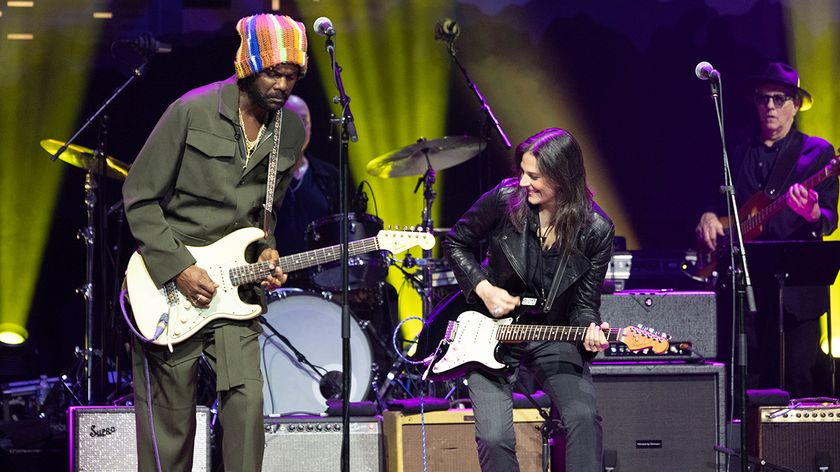
“I'd sit there with my guitar and that was my education. This show gave me purpose, it gave me hope”: Watch Gary Clark Jr. deliver a blazing rendition of two Stevie Ray Vaughan classics for Austin City Limits' 50th Anniversary televised special
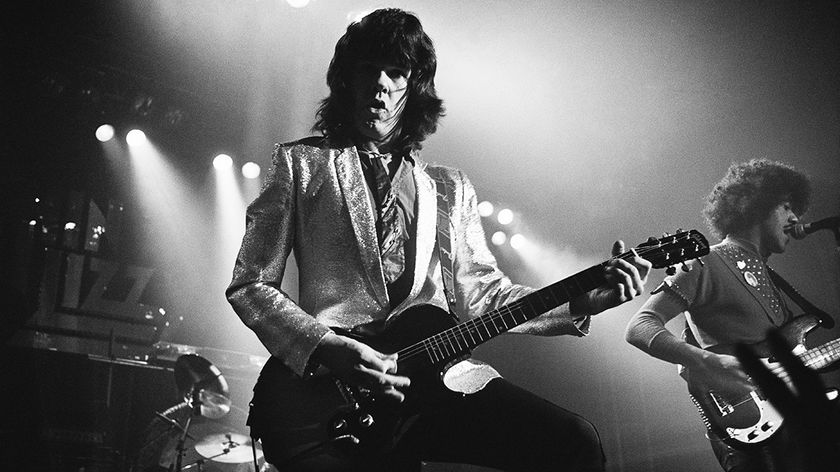
“There was never any half-measures with Gary. If he didn’t like something he’d soon tell you to f**k off”: In July 1979, Gary Moore stormed off stage and officially left Thin Lizzy – now, guitarist Eric Bell reveals the real reason why

